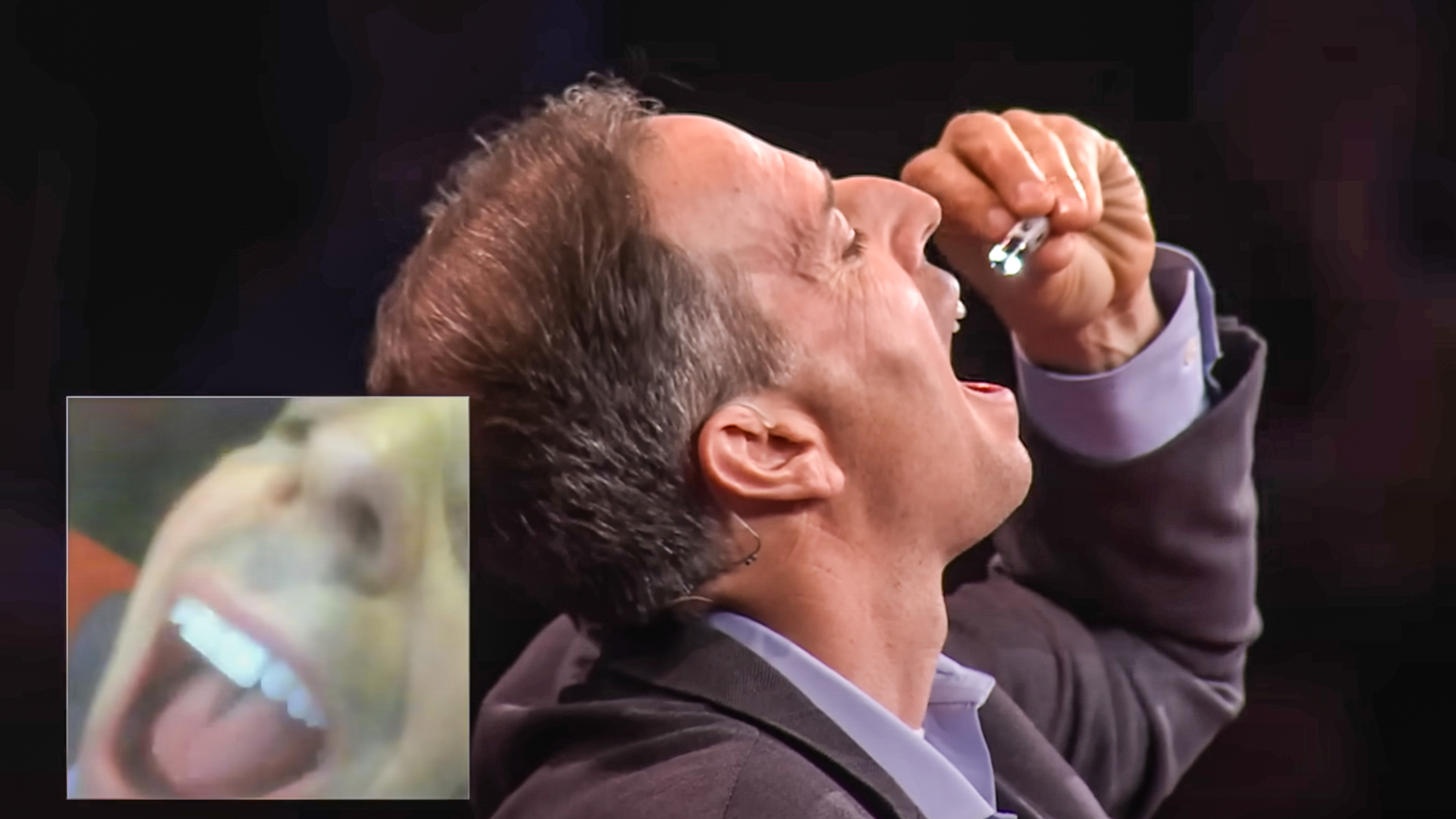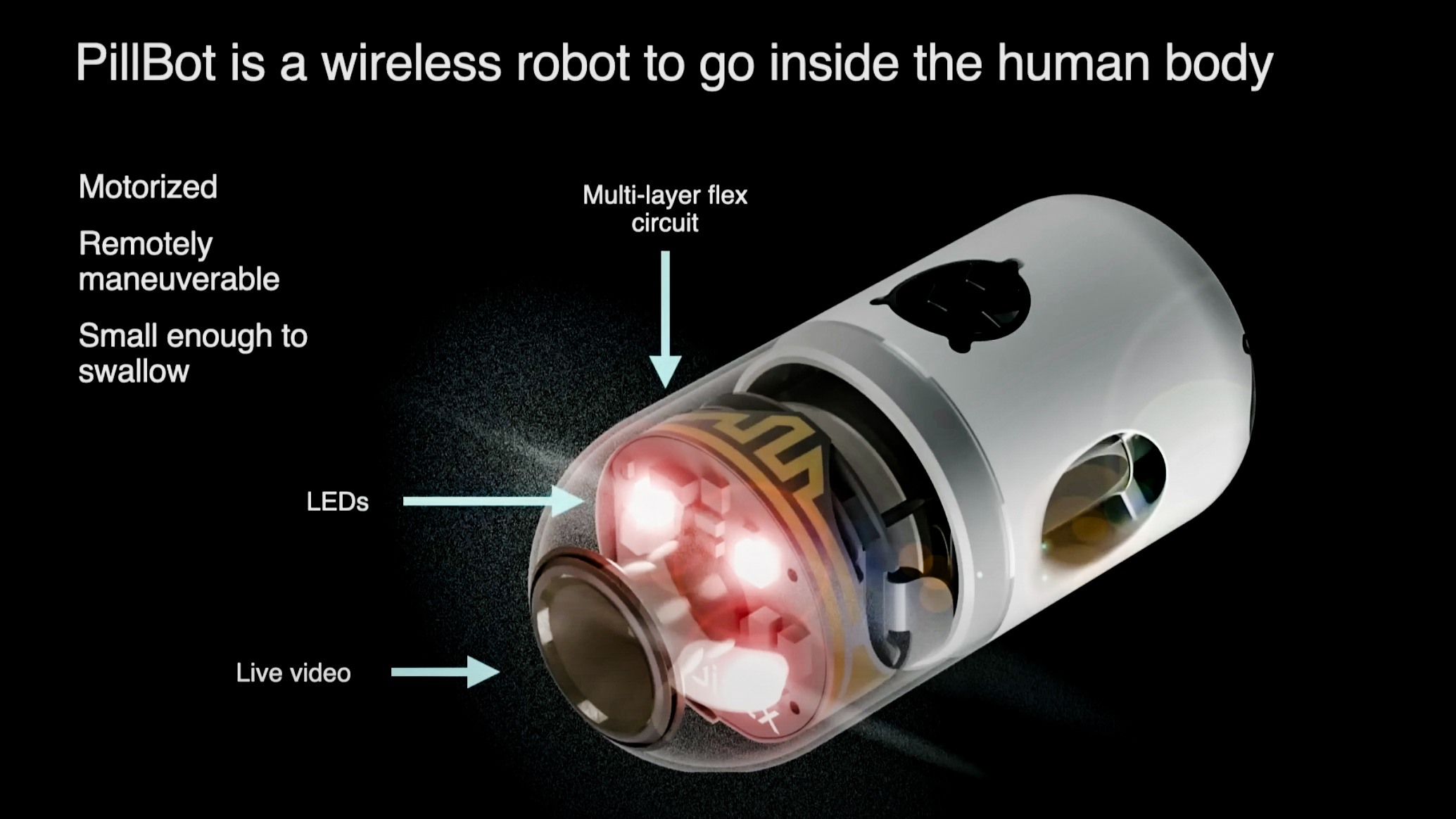
I love a TED Talk, but this latest one goes further than most in explaining new concepts in a way that everyone can understand. Hats off to Alex Luebke, who went a step further than most by swallowing a miniature camera live on stage – so that everyone could see how his invention worked.
Luebke was demonstrating the PillBot – a small wireless camera that can show the inside of your stomach, and can be remotely controlled by a doctor. The idea is that this simple-to-use diagnostic tool can be used to replace more invasive procedures using endoscopes, and diagnose issues such as cancers or ulcers more quickly and more cheaply.
We've previously written about similar devices, the PillCam and ColoCap.
Above: Watch Alex Luebke swallow the pill-sized remote-controlled camera
"I'd like to invite you to go on a fantastic voyage with me today, as we explore inside the human body," says Luebke as he introduces his Talk, and then goes on to explain the concept and show us the PillBot.
"PillBot is a small, wireless robot that is remotely controlled, and it swims around in three dimensions in a water-filled human stomach", he explains. "This robot has things you would expect on a robot. It has a camera, so it gives you a live video feed. It has control circuitry. It has LED lights because inside the human body it's quite dark. It has a wireless data link and it has a battery. Now the way this robot moves is it has three pump jet thrusters that squirt water in six different directions, that allow the pilot to fly around in three-dimensional space."
He then brings Doctor Vivek Kumbhari, chairman of gastroenterology at the Mayo Clinic in Florida, to help with the demonstration. Luebke then swallows the PillBot just like it was a vitamin supplement, and Kumbhari navigates the device as we see the camera's live output on screen using a PlayStation controller.

"A patient who's generally in good health comes to see me because they have abdominal pain, and I suspect it's coming from the stomach", explains Kumbhari. "Now I need to understand precisely what the problem is, but I can't just pop my head in and take a look.
"So, and despite that patient sitting right in front of me, I need to ask them to go back home and come back to the hospital on another occasion so I can put them to sleep with anesthesia so that they allow me to insert this long tube with a camera at the tip, through the mouth and into the stomach. This is an endoscopy, and it's a relatively invasive and expensive procedure, and we are on a mission to do better".
With the PillBot, he can perform the diagnostic there and then.
The PillBot is just about to go into clinical trials, and Luebke estimates that it will be a couple of years before his company Endiatx can put it on the market.
Other similar robotic cameras are also under development around the world. A couple of years ago we reported on how the PillCam was being used to help screen for bowel cancer in Scotland, and more recently the ColoCap has been funded for a research program in the United Kingdom.
Also read World's smallest camera is the size of a grain of sand







